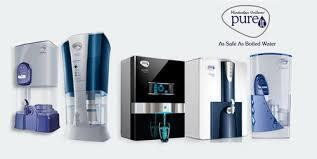Using a water purifier can be depending on the type and model of the purifier. Configuration plays a major role in operating any water filter, but here are some general and simple steps that can help a user:
- Read the manufacturer's instructions: Before using the water purifier, read the instructions carefully to understand how it works and any specific steps you need to follow. It is important to read the user manual irrespective of
- Checking the filter: Make sure the filter is properly installed and in good condition. If it needs to be replaced, follow the instructions to replace it.
- Fill the water container: Fill the water container with tap water. If your purifier has a pre-filter, make sure it is also filled with water.
- Turn on the purifier: Depending on the model, you may need to plug it in or turn it on using a switch or button.
- Wait for the water to purify: It can take a few minutes for the water to purify, depending on the model and the amount of water being purified. Some purifiers have an indicator that shows when the water is ready.
- Clean the purifier: After use, clean the purifier according to the manufacturer's instructions to keep it in good condition and ensure that it continues to work effectively.
Remember to regularly maintain your water purifier and replace the filter as needed to ensure that it continues to work effectively and provide safe and clean drinking water.
Here is a comparison between two different types of water purification systems:
Electric water purifier vs Non Electric water purifier
Electric water purifiers provide a more sophisticated form of water purification using technologies such as reverse osmosis (RO) and ultraviolet (UV). Advanced stages of RO and UV purification include multi-layered filters as part of the water purification process - sediment filters, pre-RO carbon filters, mesh filters, RO membranes, UV chambers, post-carbon filters -RO and microfiltration devices. Such an efficient purification system requires electricity to operate because the incoming water must pass through all these layers of filters to provide pure and safe drinking water.
Difference in Purification Process
Non electric water purifiers, on the other hand, have a much simpler purification process. They are equipped with sediment, carbon and microfilters arranged one under the other.
Once you have filled a non-electric water filter with water, it will perform these filtration steps itself under the force of gravity. The pure water is then collected in the lower water tank of the water purifier.
Effectively removes various impurities
Electric water purifiers with RO and UV purification technology can not only remove microorganisms - viruses, and bacteria but also remove heavy metals that TDS cannot eliminate, chemicals and excess TDS cannot be non-electric water purifiers. If your source water contains high levels of TDS (>300 ppm), you should consider installing an RO water filter. Only RO water purifier can remove salt from the water and soften drinking water.
The Pureit range of RO water purifiers removes up to 2000 ppm of TDS and is suitable for purifying all types of water regardless of source - borehole water, reservoir water or groundwater.
Works differently for different TDS levels
Non-electric water purifiers are suitable when your water has a TDS below the consumption limit and does not contain heavy metals harmful to our health. Non-electric water purifiers remove microorganisms such as bacteria, viruses, and pesticides through their filters. It is also capable of eliminating odours and chlorine present in the water.

